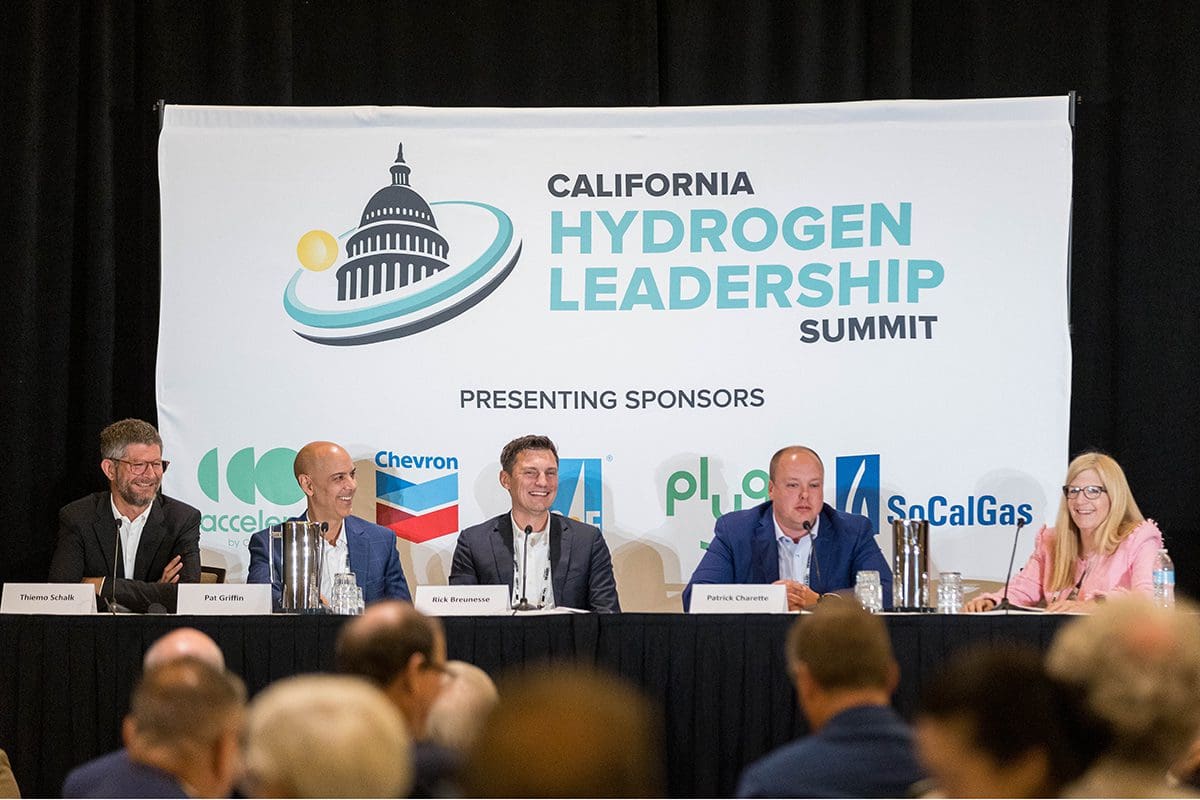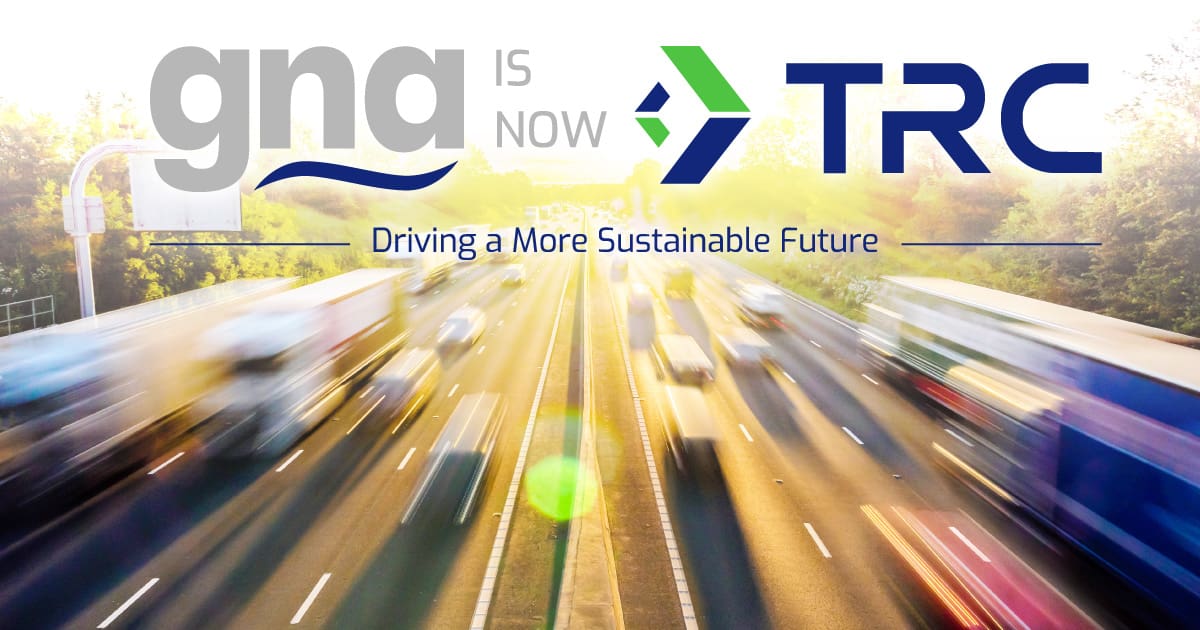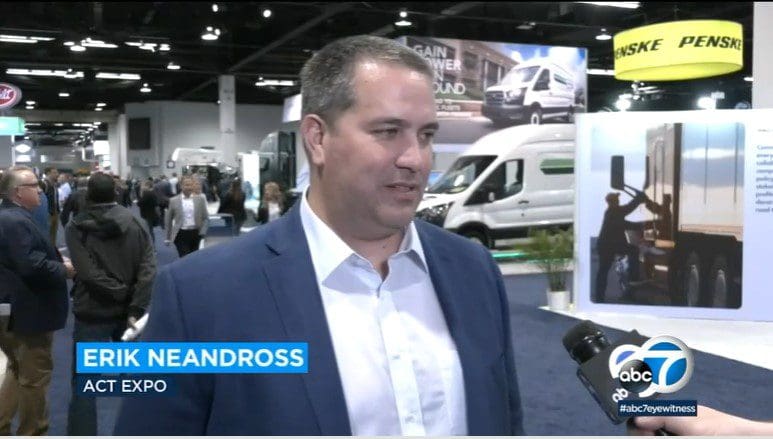
- News Story
California Hydrogen Leadership Summit Encourages Expanded Access to Emerging Fuel
July 6, 2023
Source: ACT News
Beginning in 2015, GNA has held an annual symposium to educate policymakers about the critical role renewable gases can and should play in California’s energy future. This past June 20th, at the eighth annual Summit, a record number of stakeholders converged on the state capitol to discuss strategies, policies, and programs to accelerate the adoption of clean hydrogen and related technologies in California.
Nearly 550 Leaders from across state government and the hydrogen industry participated in the day-long California Hydrogen Leadership Summit (CHLS), reviewing ways that the parties can work together to accelerate the time that hydrogen becomes a major contributor to the state’s efforts to reduce air pollution, mitigate climate change, diversify and strengthen its energy supply, and contribute to sustainable economic development. For the second year in a row at CHLS, co-hosted by the California Hydrogen Business Council, renewable hydrogen was the focus of the symposium.
A slate of speakers addressed the various ways that clean hydrogen can contribute to the welfare of the state.
“We are taking a multi-pronged approach,” started Alberto Ayala, executive director and air pollution control officer for the Sacramento Metropolitan Air Quality Management District, during his kick-off address, adding that “the freight sector is the one that is most challenging.”
This approach, according to Ayala, includes investment in hydrogen stations in partnership with Fuel Cell Energy and Nikola, both of which will focus on heavy-duty fuel cell vehicles. Transitioning to another form of highly polluting transportation, Ayala highlighted the efforts of Sierra Northern Railway, which is retrofitting a diesel locomotive with a hydrogen system. The Sacramento Regional Transit District is also working to transition to zero emissions and is currently developing a hydrogen hub.
“I am very bullish because clearly our federal government has spoken — we now have an actual federal plan for how to transition to hydrogen,” added Ayala.
California State Senator Josh Newman was next to speak, immediately addressing how critically important it is for policymakers to recognize that the state cannot succeed in reaching its emissions goals by merely imposing technology and forcing mandates “without also executing practical and pragmatic solutions.”
“Relying exclusively on battery-electric vehicles will not be enough to get us there,” continued Sen. Newman, pointing to California’s recently adopted Advanced Clean Fleets Rule.
The event’s first panel discussion, Clean Hydrogen to Decarbonize California’s Energy Systems Across the Value Chain, included Michael Galvin, director of waterfront and commercial real estate for the Port of Los Angeles; Michael Hoban, general manager of hydrogen at Chevron; Jack Hedge, vice president of hydrogen hub development with BayoTech; and moderator Serj Berelson, senior manager of policy, at Mainspring Energy.
Unlike some other clean technologies, hydrogen offers a smoother transition when moving from diesel, a point that BayoTech’s Hedge was quick to point out.
“It’s a one-for-one — you replace one diesel with one hydrogen. Not many other technologies can do that today, so having the production capacity, the storage and distribution capacity to support that, sooner rather than later, gets us to that one-for-one transition quickly,” said Hedge.
The discussion then moved to policy, an important key to accelerating hydrogen adoption. Pointing to the 2045 goal of producing all retail electricity sold in California with renewable and zero-carbon resources, Galvin expressed a need for the production stakeholders and the utilities to work towards a common goal.
“Creating goalposts for the production industry is really important so that they know what they’re shooting for and at the same time it aligns the power grid regulation with the hydrogen production regulation,” said Galvin.
This year’s transportation keynote speaker Lori Pepper, deputy secretary for innovative mobility solutions with the California State Transportation Agency, began by dispelling the myth that one zero-emission vehicle technology is better than the other.
“They both produce zero emissions but have different features, and individuals and agencies or companies or others should have the ability to choose whichever technology works best for them,” said Pepper. “The state has big goals in this area and the government should not be picking winners or losers. However, we do need to support the industries to be able to grow to a point where these vehicles are no longer in niche vehicles and a large portion of that responsibility has to do with the infrastructure.”
One of areas of support will be coming in the form of a hydrogen hub in California, which will help stabilize and grow the hydrogen industry within the state and throughout the country, with applications that go beyond transportation.
“My hope is that research in this area will help develop additional ways to use fuel cells such as for in-field charging of batteries that become more practical and widespread, as we transition to a fully carbon neutral economy,” said Pepper.
The subject of the state’s power grid was examined during the Hydrogen for Reliable and Resilient Electrical Grids panel discussion, which included Christine Cowsert, senior vice president of gas engineering, service planning and design at Pacific Gas & Electric Co. Addressing the the audience before the session Cowsert said, “We’ve set some pretty aggressive goals for ourselves at PG&E in terms of our climate strategy. As we embark on our climate strategy, we still have lots of work to do, including incorporating cleaner fuels into our gas system and looking to deliver renewable natural gas or hydrogen to harder to electrify portions of our customer base.”
With California’s electrical grid suffering from numerous failures in recent years, some point to hydrogen as a way to improve the long-term reliability and resilience of the grid.
“Hydrogen is here to help; hydrogen is here to make the grid work, and it’s going to work best if we have the most flexibility for it,” said Tim Sasseen, director of market development and public affairs, North America, at Ballard Power Systems.
Attendees were then given insight into the financial and regulatory barriers that hydrogen projects face and what they can do to improve prospects for investment and project financing. during the Project Development: Building Successful Hydrogen Projects session.
“California is very good at big vision and ambitious goals, and now in order to realize those goals we actually need to start building infrastructure, and a lot of it, and very quickly,” began Tanya Peacock, managing director of EcoEngineers and chair of the California Hydrogen Business Council. “We need a broader, more comprehensive vision about how we’re going to get these projects built rather than the very specific [current] measures. They need to be bigger and bolder to expedite these projects.”
Before moderating the next panel discussion, Meeting California’s Zero-Emission Transportation Goals With Hydrogen, Cummins Vice President of Government Partnerships and Funding Amy Adams addressed the audience on the current state of hydrogen in the U.S.
“It’s an unprecedented time in the area of government support and government funding for hydrogen, both at the federal and state level,” said Adams, adding that “it’s energizing to see all of the discussions, because there are partnerships that are being formed. There’s information that’s being shared and that’s the only way we’re all going to achieve the vision.”
Funding may also come from the private sector as well for infrastructure, as pointed out by panelist Patrick Charette, director of hydrogen fueling and distribution solutions at Nikola.
“What’s going to build that robust network with partners is bringing in private money, too,” said Charette. “Private money is going to love a highly utilized station. Subsidies are so important at the truck level to drive utilization to the station, and that’ll build out the big network.”
But for fleets, it will really come down to the bottom-line calculations, as pointed out by Rick Breunesse, business development director of Symbio North America, a provider of fuel cell solutions for light- and heavy-duty vehicles.
“In the end, it’s a TCO discussion,” said Breunesse. “They have to make money, so we have to make products for them that they can use to do their businesses, and in a cost-effective way.”
Applying hydrogen to more than just the commercial transportation sector was just one of the main points made by Matthew Botill, chief of the industrial strategies division at the California Air Resources Board. During his hydrogen and climate keynote, Botill discussed the improvements made throughout the state, including the continuing trend down in the state’s greenhouse gas emissions, reaching its 2020 goals by 2014.
“What does it look like to transition one of the world’s largest economies to carbon neutrality between now and 2045? It means a significant ramp up in zero-emission vehicles, a significant increase in building electrification and alternatives to fossil gas and buildings. It means a significant ramp up in renewable electricity generation that needs to be done and in order to meet the electrification demands,” said Botill.
Technological advances in the aviation and ocean vessel sectors have also created opportunities for hydrogen deployment as well. “The goal at the state level right now is to make sure that we all, both in the public and private sector, are capitalizing on these opportunities and really building the low carbon hydrogen infrastructure that’s needed to get us off of fossil fuels,” concluded Botill.
The one-day event also included sessions on how the state can meets its zero-emission goals with hydrogen and how it can improve local and regional air quality, as well as a “fireside chat” on how the federal government has recognized the importance of the U.S. becoming a leader in developing a clean hydrogen energy economy and the resulting Infrastructure Investment and Jobs Act and the Inflation Reduction Act.
For a complete look at this year’s agenda and speakers, visit www.cahydrogenleadershipsummit.com.
Read the full article here.



